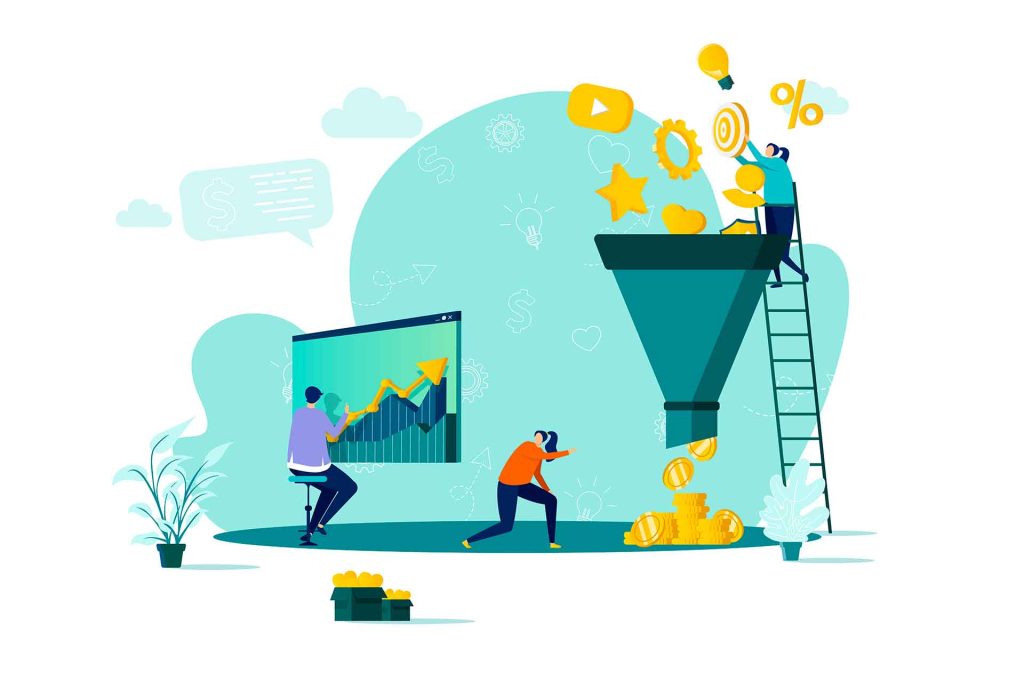Summary
To find growth in your DTC program, you have the opportunity to examine the customer journey in order to segment your list on where they are in that journey. Once that list is defined, you now have a sales funnel that will allow you to have smaller strategies to move each level to the next. All the while extending lifetime value and the profitability of each customer. This is how every Fortune 1000 retailer operates their consumer division and they have less margin to work with than wineries. They understand the cost of employing the strategy and that it nets higher profitability per customer. You should try it.

Your funnel will unify your team's efforts and increase DTC sales.
Each prospect, lead, customer, and member of your DTC customer database is at a different stage in their journey. Understanding those stages will focus your teams and message. Which will instantly lead to more sales.
What Is A DTC Sales Funnel?
In layman’s terms, a DTC sales funnel represents the stages of a customer’s engagement with your business. In this scenario, top of the funnel represents tasting room visitors. The middle of the funnel represents qualified buyers (qualified = active and engaged). And, the bottom of the funnel represents your wine club members.
As we’ve discussed before, each stage of the funnel represents – in theory, different messaging, different selection and increased incentive to buy at lower prices. Your goal is to move each stage of the funnel to the next level.
What Are the Stages of Winery Customer Journey?
- Prospect: Someone researching their visit to wine country – they find you through friendly referral, social media posts, reviews and search engine.
- Lead: Visited the website or tasting room. Provided customer data. Intent to buy, +/- 30%
- Customer: Purchased in the tasting room, connected with place and staff. Intent to buy again, +/- 50%
- Member: Connected to the brand, not only feels value, but they also feel connection and therefore subscribes to the club.
- Ambassador: Typically, club members that become super fans. They share the wines and the greatest source of future referrals.
Just Above and Just Below the DTC Funnel
Customers that are just above the funnel – are your potential tasting room visitors. They are part of your customer acquisitions strategy, which is to say, you want to get them to reserve a tasting, show up, try the wines, and then buy some. Those visitors become leads for sales. Sales can move them to ‘qualified customers’ – down the DTC funnel, by selling them again.
Customers that are just below your funnel, represent your attrition. Either club members or qualified non club members that found reason not to buy from you any longer. As a rule, the closer a customer is to the bottom of the funnel, the closer they are to the door. Keeping those customers engaged with timely customer service is one of the best ways to extending their stay and lifetime value.
In the end, acquisition and attrition represent the natural cycle for any DTC business. Just make sure you are acquiring more customers than you are losing.
How The DTC Sales Funnel Benefits Your Winery
- Aligning e-commerce, social media, and marketing with DTC/tasting room sales.
- Smaller, more obtainable KPIs increase org morale. (Increasing acquisition, lowering attrition, % of non-members converted to club, $ value of the club)
- Increases organization wide awareness about strengths and weaknesses in your DTC strategy.
- Improves compensation strategy and bonus development
- Increases sales per channel
Speaking the same language and sharing the same goals brings out the best in the organization and the biggest win for customers.
Example. The tasting room represents the greatest opportunity to gain new customer data, potential customer data and plays “set up” for future e-commerce promotions. The tasting room staff should understand how vital it is to capture clean, verified, phone numbers and email addresses for the e-commerce team to be successful once that customer leaves the winery. That also extends to what we do, telesales.
DTC customers that visit but don’t always buy – should become marketable leads that e-commerce can try to move down the funnel to become a piece of the middle of the funnel. That requires the tasting room and to a lesser extent, website/lead gen forms, acquiring marketable, visitor information.
When each revenue generating department works symbiotically, everyone wins. Including the customer.
How To Use Your DTC Funnel to Increase Wine Sales
- Focused Effort – the job isn’t to capture one sale. Your job is to make that visitor a profitable customer, then hopefully a wine club member. Each stage of their engagement will become more purposeful and effective over the long term.
- Prioritizing DTC customer acquisition and engaging the marketing team to focus their content and ad spend on tasting room visitation.
- Maximizing customer relationships – “I’m not a club member – but when I feel connection with a brand, I spend more, and more often.” Everyone isn’t going to become a wine club member – but many will if you show them the benefit.
- Separate your email marketing and telesales lists by stage in the funnel.
- Share with them what their savings if they were club members on their purchases.
- Progressively increase the discount and shipping incentive as you move further down the funnel.
- And call your club members at least 2x per year – even if they don’t buy, it will go a long way to keeping your members engaged and feeling appreciated.
As a manager, owner, Director of VP of Marketing, the funnel will require you to have a unique strategy that meets the customer where they are in their journey. One size fits all marketing isn’t going to get you to your goals faster. What you will experience, big wins in smaller segments of customers and more sales across the board.




